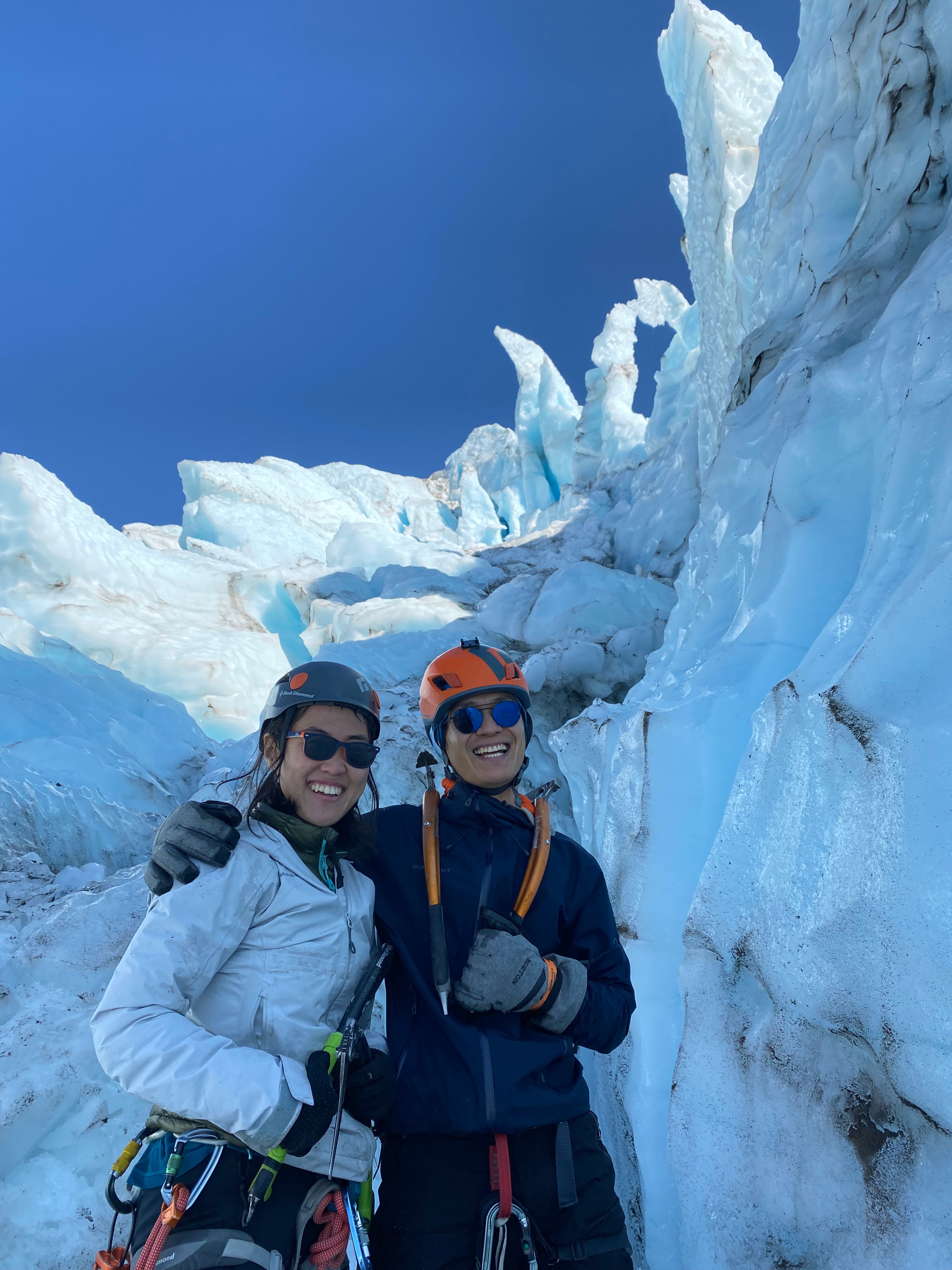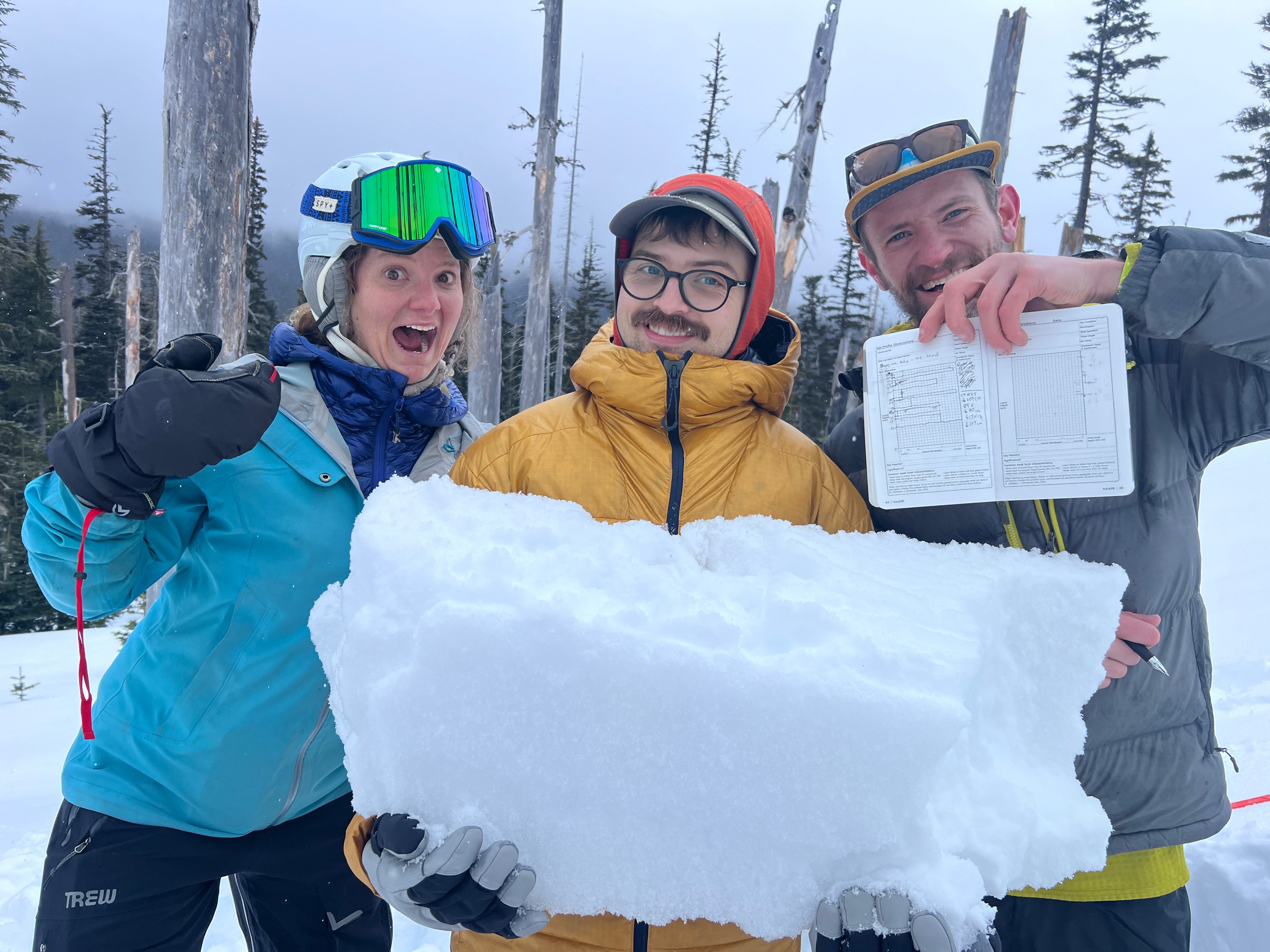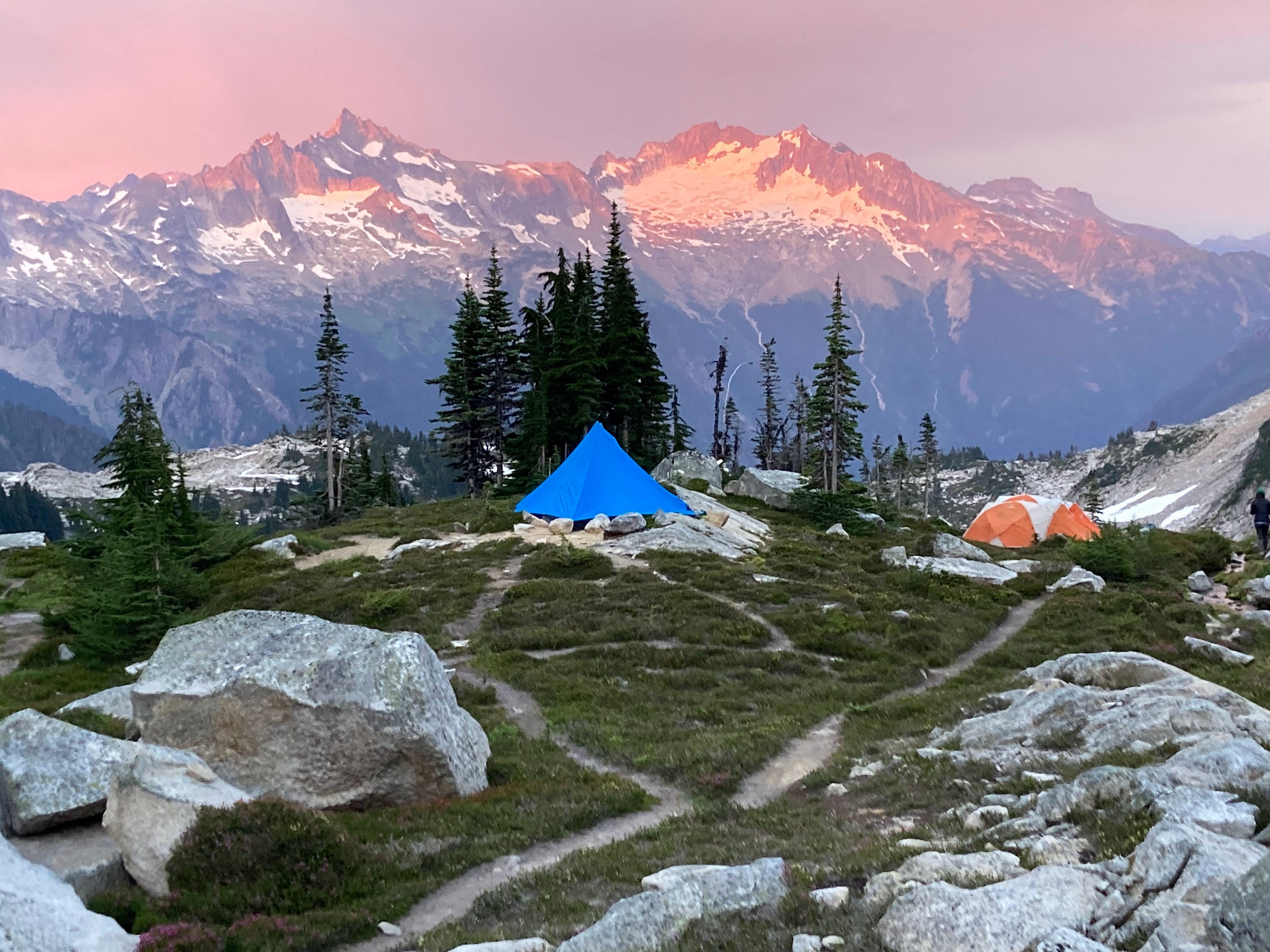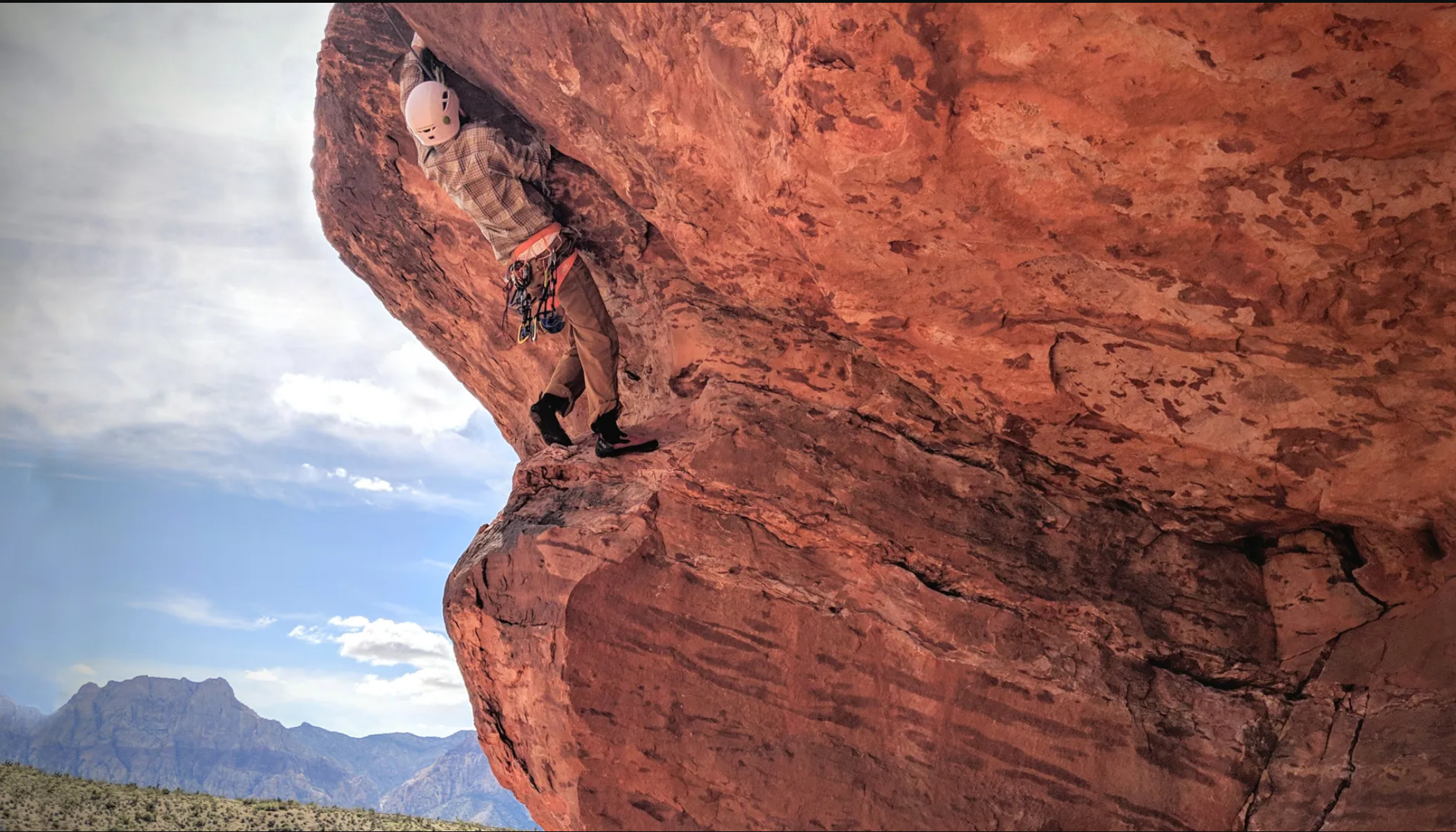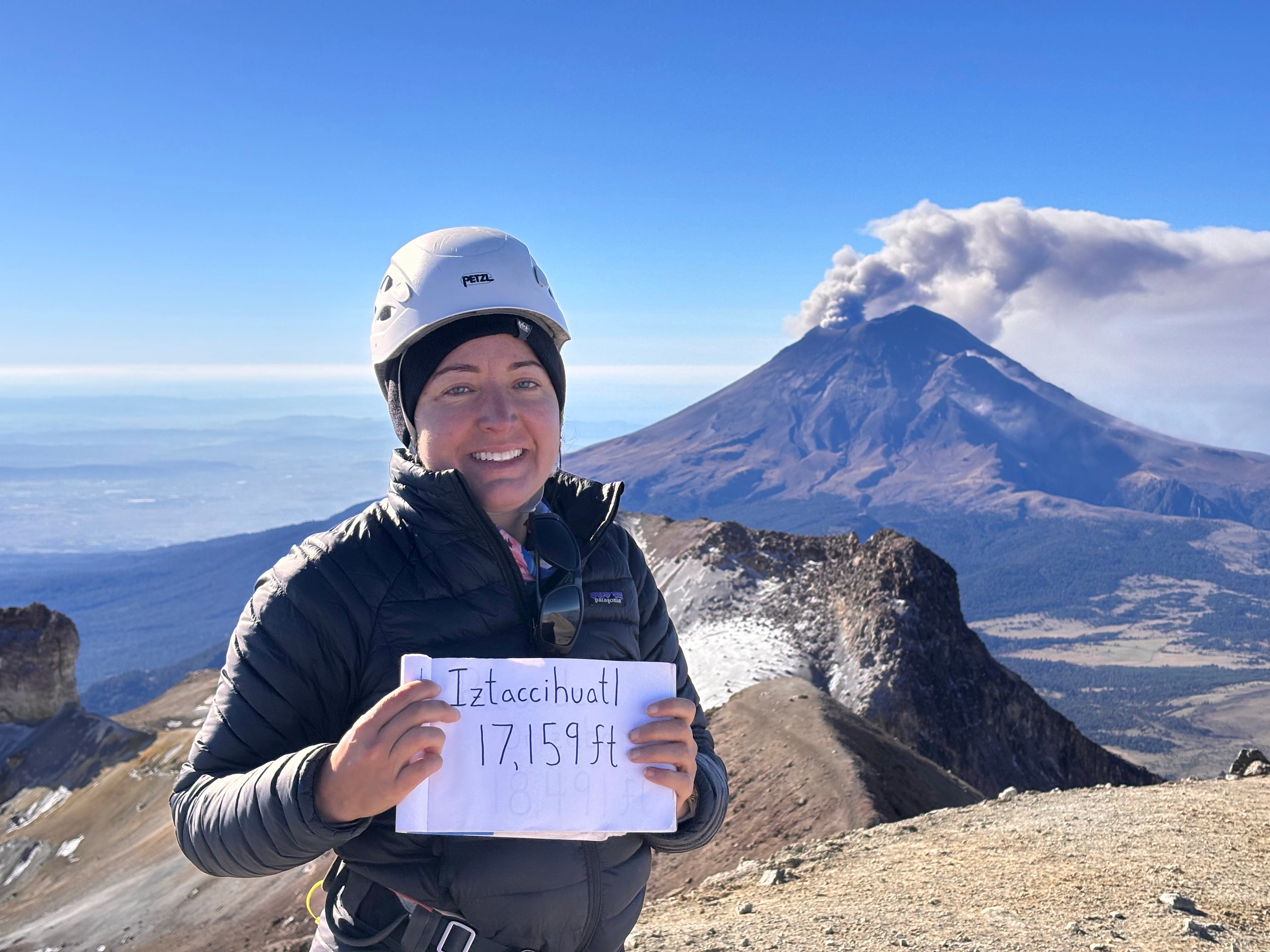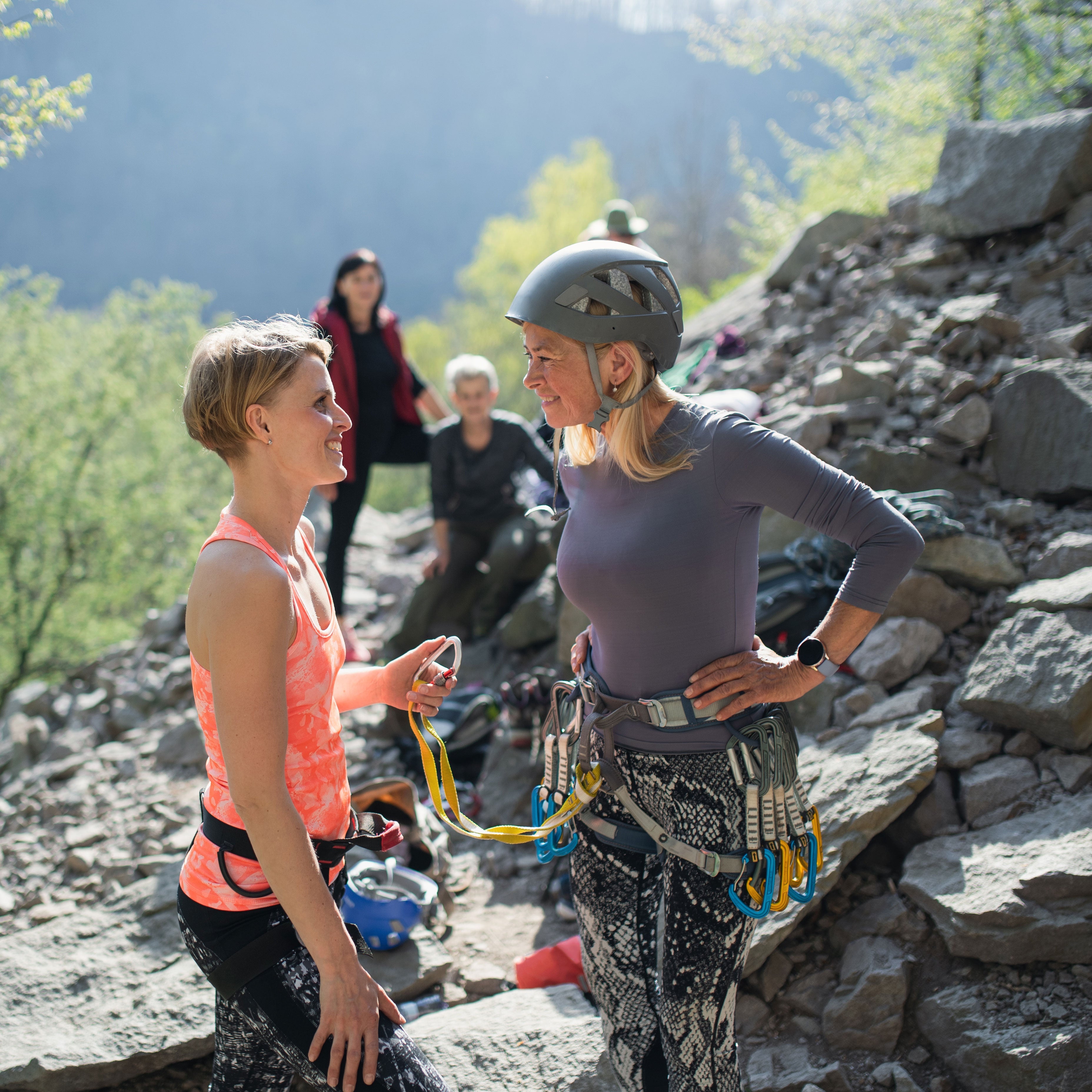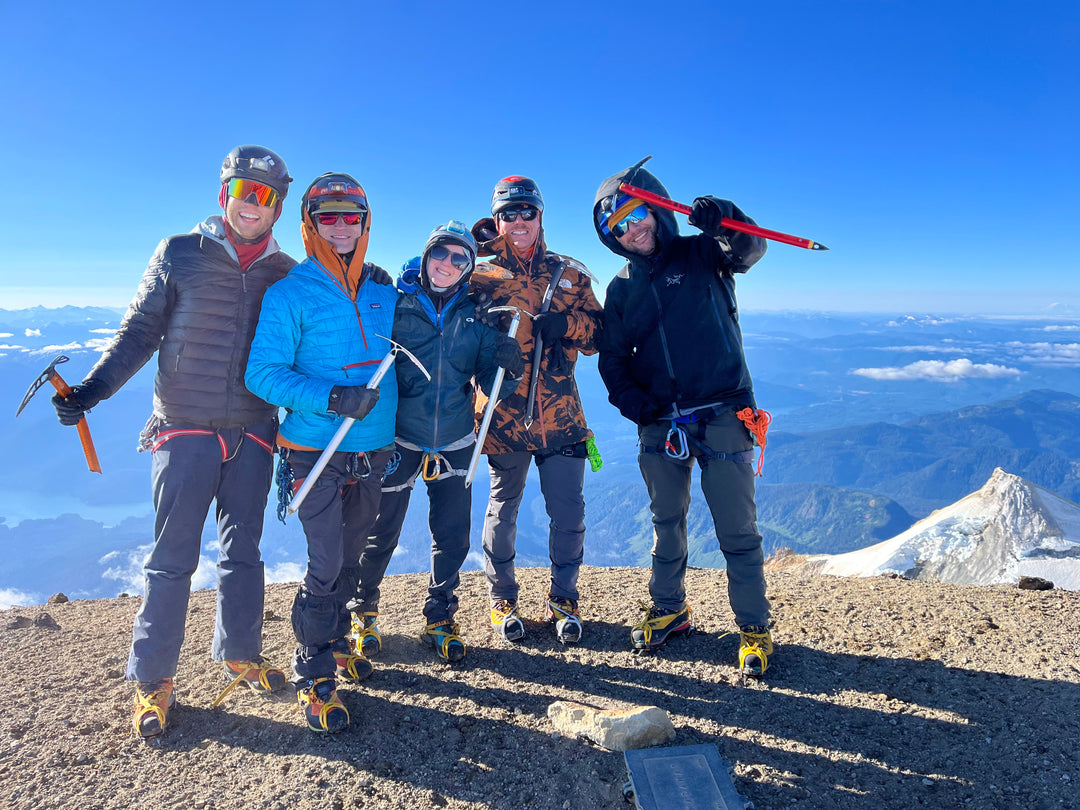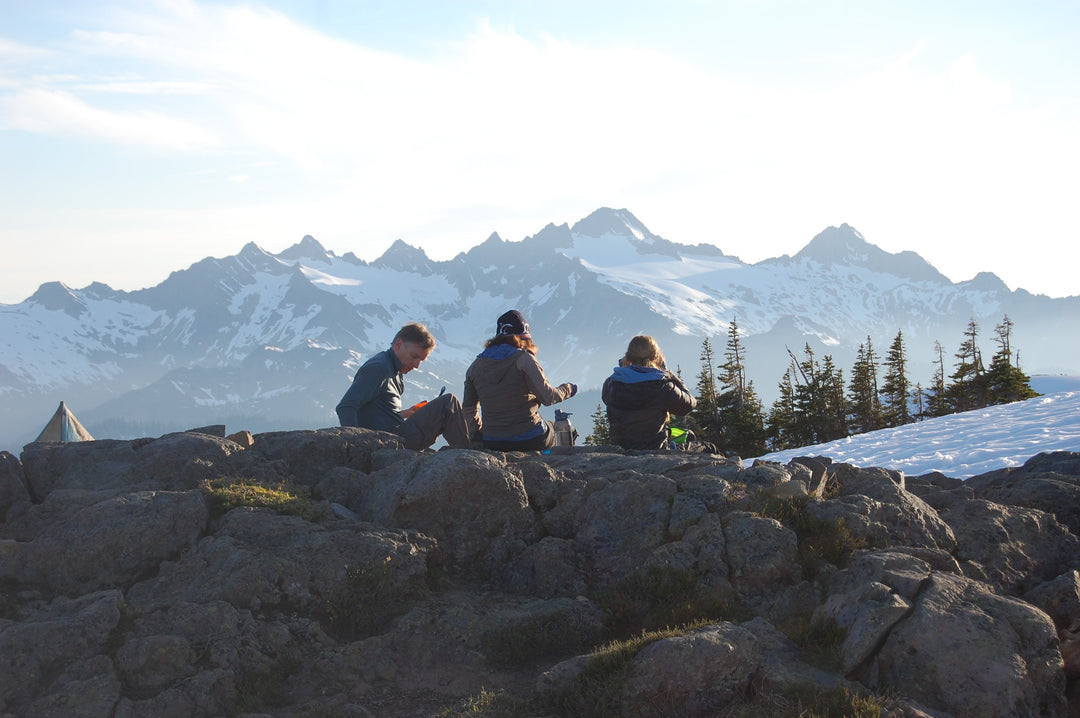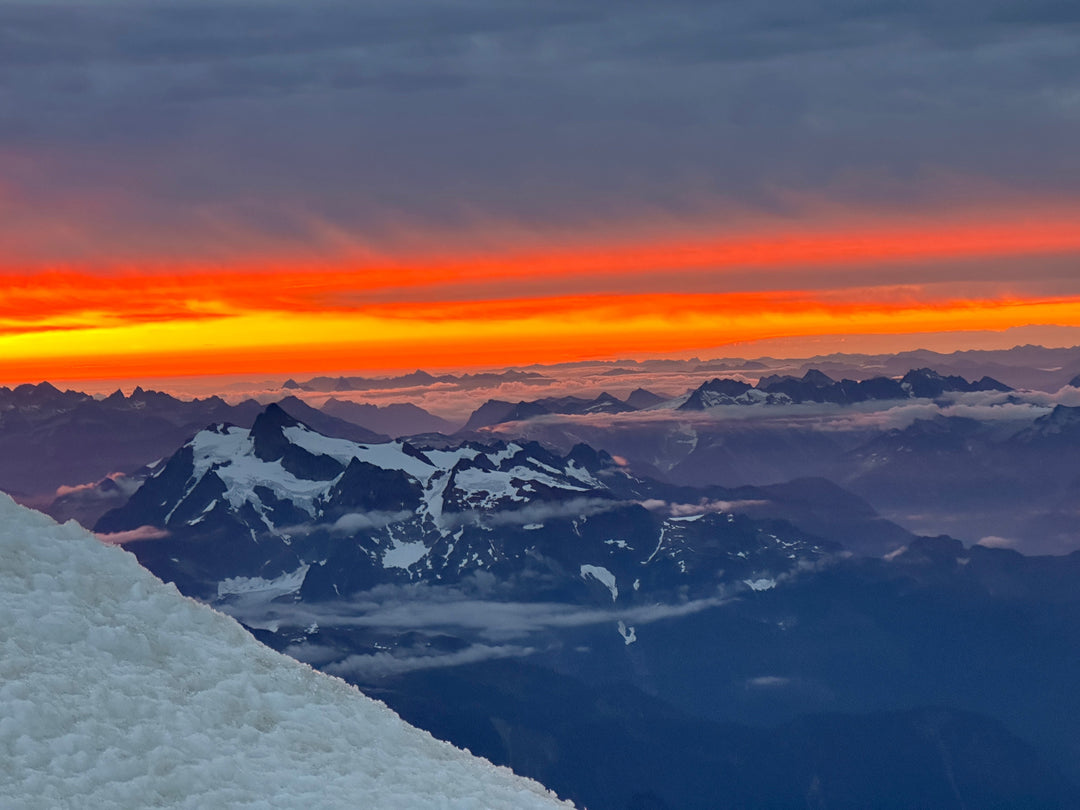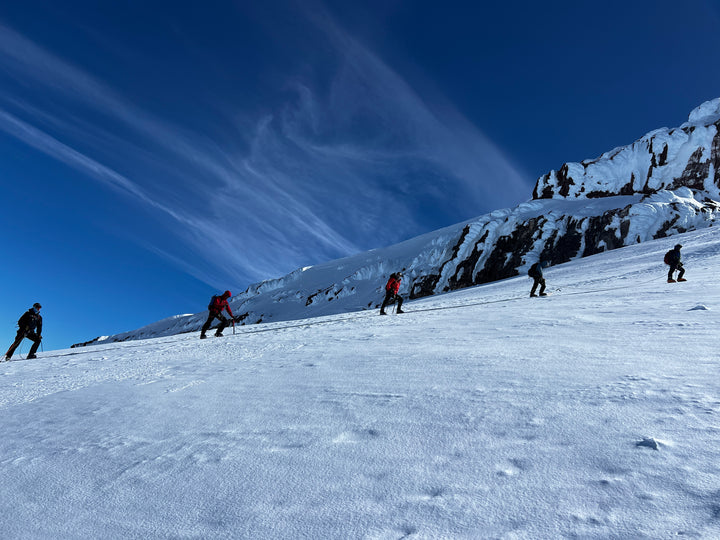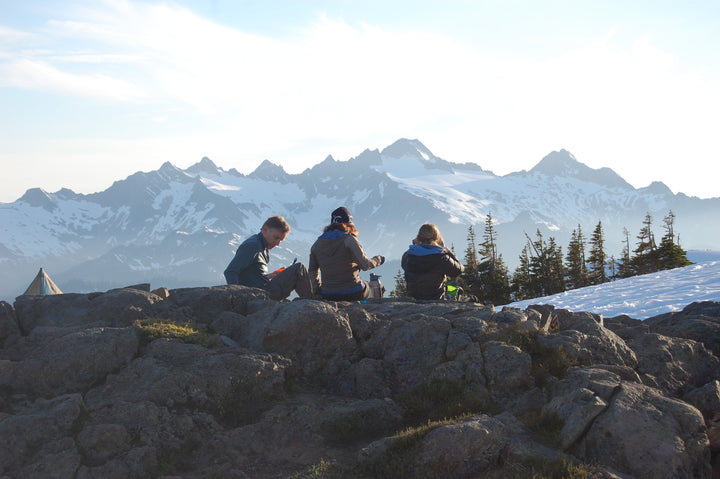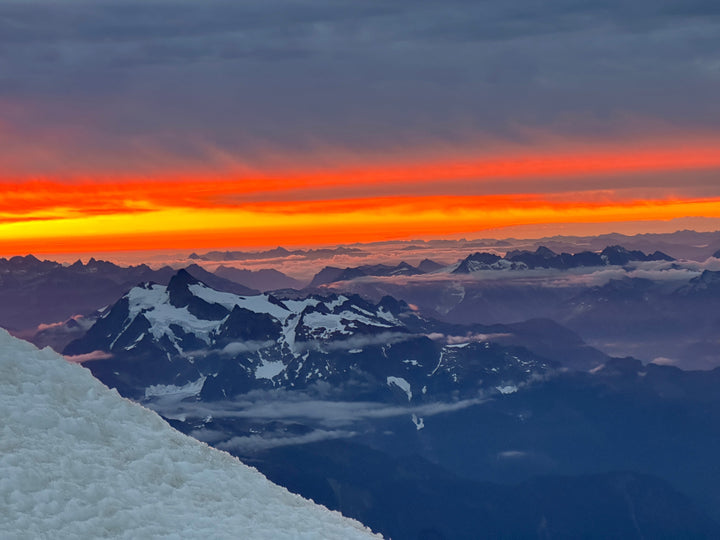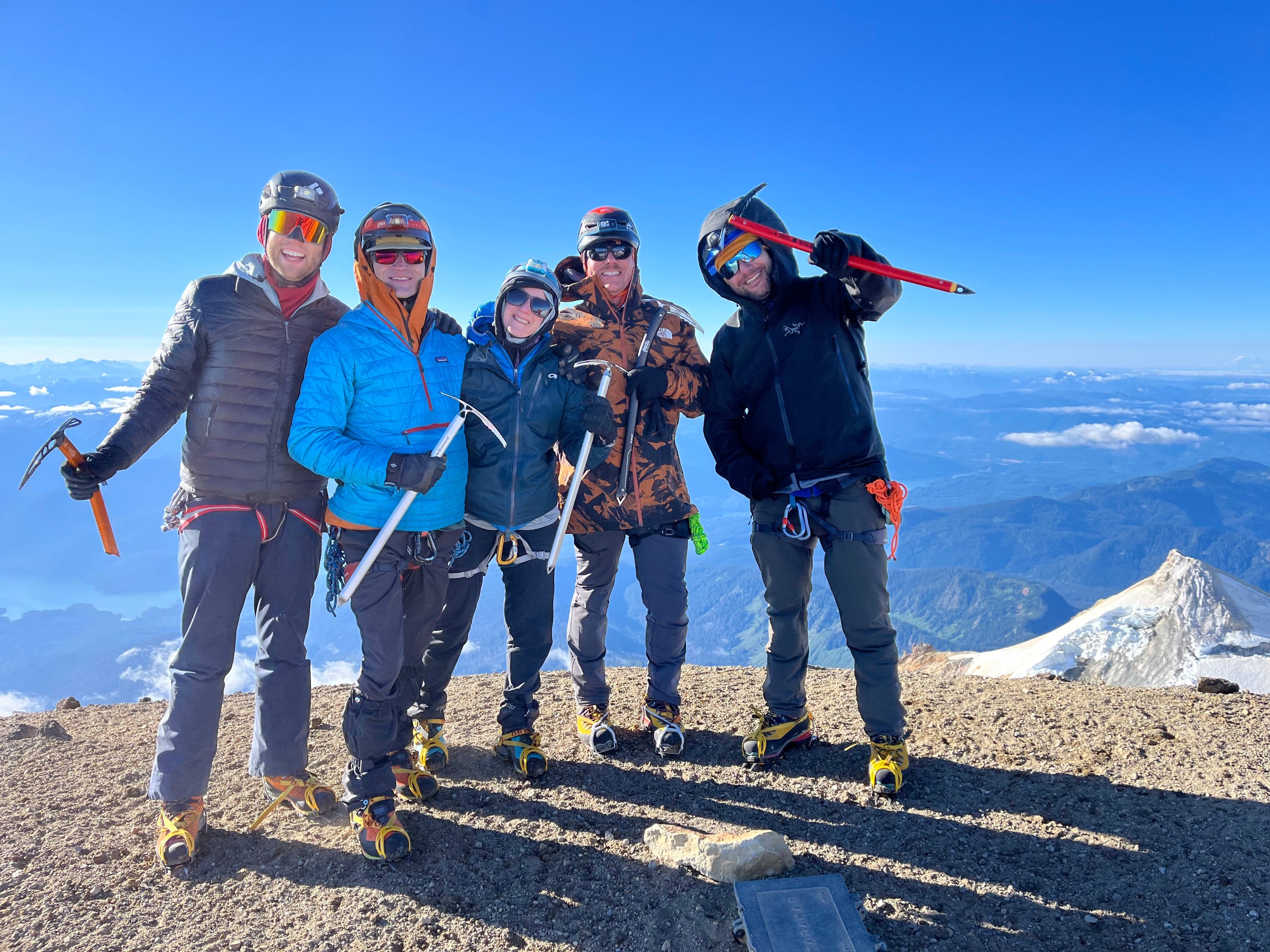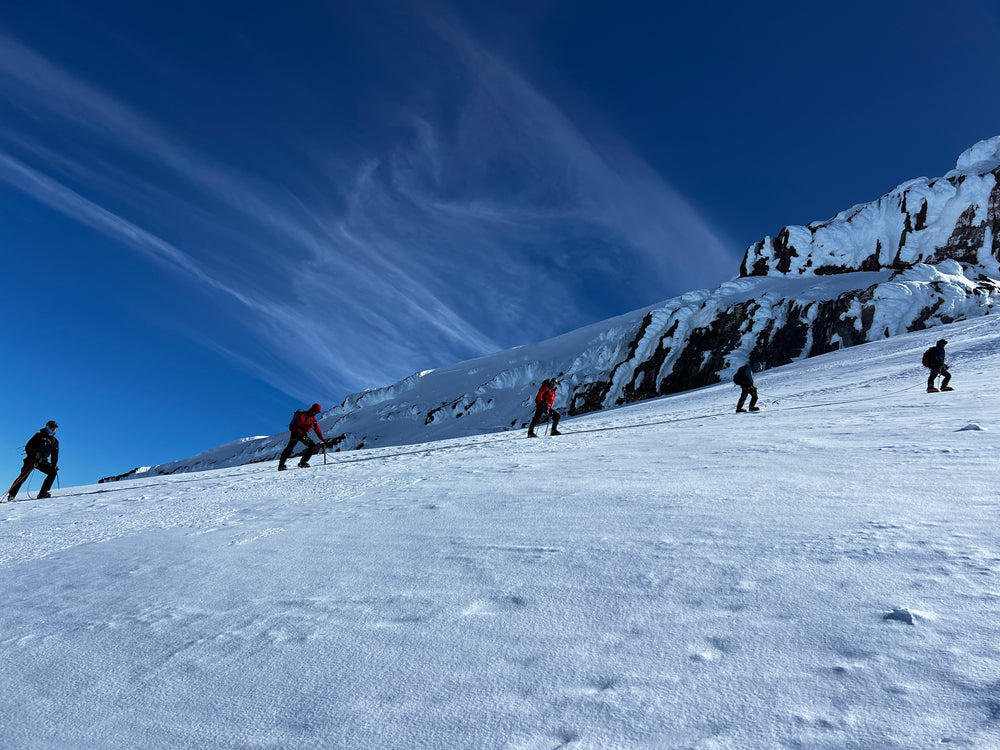Duration
- 2 days
- 1 night
Season
- Spring
- Summer
Client:Guide Ratio
3:1
Minimum Participants
3
Day 1 - Arrive at your designated meeting location by 8am to go over equipment, distribute group gear, and finish loading your packs before driving to the trailhead. The approach to basecamp is 3-5 miles and up to 3,000 feet of elevation gain. After setting up basecamp, you'll spend the afternoon practicing crampon and ice axe techniques, self-arrest, glacier rigging, rope team travel, and more. After a long day, you will be glad to have a hot meal and go to bed early to get some rest for the summit attempt!
Day 2 - Leave camp around 2am to start the summit attempt. Depending on the route/conditions/weather and a myriad of other factors, it can take anywhere from 4 to 12 hours to reach the summit. Enjoy the views and sense of accomplishment - you earned it! After a short celebration, be prepared to plunge step several thousand feet back to camp. We'll have a bit of a rest, then break down camp, and head back to the cars. You can expect to be back to the trailhead around 6pm.
- Mount Hood Skills Course or equivalent experience.
- Ability to safely travel on moderate to steep snow slopes with crampons and ice axe.
- Experience with glacier travel is recommended.
- Knowledge of basic climbing knots is recommended.
- Any additional mountaineering experience will enhance your ability to learn, but is not required.
- Ability to hike for 4 hours and ascend up to 3000' with a 40 lb pack, followed by the ability to hike for 12 hours and ascend up to 5000' with a 25 lb pack.
- Upon registration, you will receive a confirmation email full of important information - make sure to read it thoroughly!
- 7-10 days before your trip you will receive an email from your guide containing even more details, including the exact meetup location and time.
- Plan to attend a virtual pre-trip meeting in the evening a few days before your course begins. This is required and a great opportunity to meet your guide, review gear, discuss your trip plan, and ask any last minute questions. For Sat-Sun AIARE courses plan on Thursday 6:30-8:30pm; otherwise the exact time of your meeting will be set by your instructor and noted in their welcome email.
- Leading up to your course, make sure to eat healthy, drink extra water, and get plenty of sleep.
- Please arrive on time and ready to go at your pre-arranged meeting location. Upon arrival, we'll distribute any group gear and finish loading our packs. From there we will caravan to the trailhead.
- All along the way, our office team is available via email or phone to answer any questions you may have.
This trip will leave you with knowledge and practical application of:
- Gear packing and equipment choices.
- Self-care on the mountain.
- Using crampons and ice axe.
- Self-Arrest and self-belay.
- Ascending and descending steep snow slopes.
- Basic knots used for mountaineering.
- Glacier rigging, rope team travel and rope management.
- Mountain hazards and safe travel practices.
- Basic emergency response.
PLUS:
- A fun experience you’ll remember forever!
- A sense of accomplishment in achieving your goals for the trip.
- Confidence in your newfound skills and where to take them next.
- Tips and tricks to add to your toolbox from our professional and knowledgeable guides.
Equipment Lists
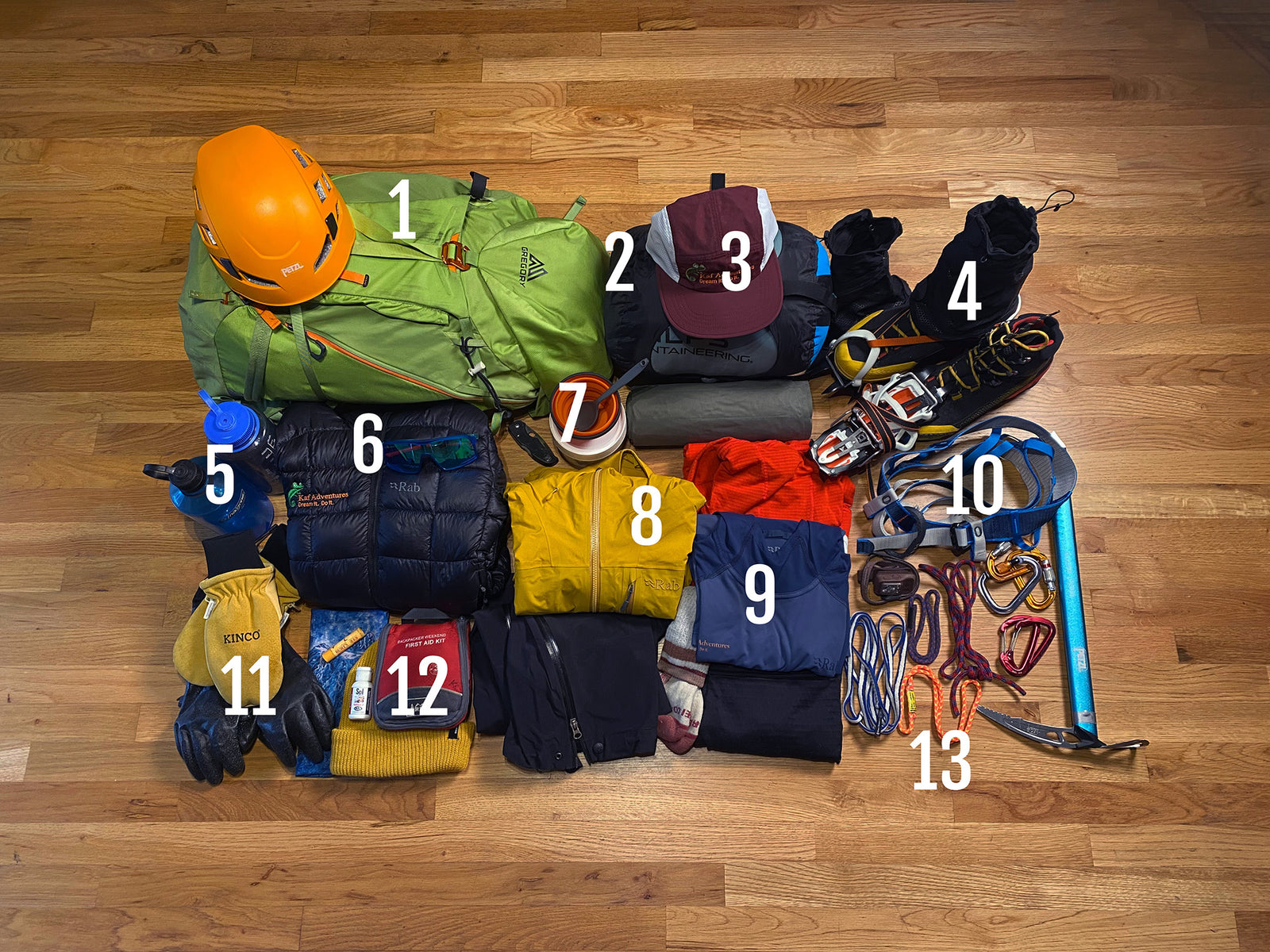
Required Gear
- Backpack 50-70L : make sure to leave room for group gear
- Sleeping gear : 20º-30º sleeping bag, sleeping pad
- Head/face protection : warm hat, sun hat (baseball cap is fine), neck gaiter (buff), sunglasses with good side coverage
- Mountaineering boots and crampons that fit snugly : (gaiters optional but encouraged)
- Water bottles with at least 2L capacity
- Insulating/puffy layer
- Personal mess kit : bowl (w/ lid preferred), cup, utensil
- Waterproof layer : hooded jacket and pants
- Base layer top and bottom : Moisture wicking, non-cotton
- Climbing gear : harness, helmet, mountaineering axe
- 2 pairs of gloves : insulating gloves, waterproof gloves
- Personal kit : sunscreen (SPF 40 or higher), lip balm, headlamp and extra batteries, toiletries (please bring a plastic baggie for waste), personal medications and first aid, personal medications and first aid
- Glacier kit : 3 non-locking carabiners, 3 pear shaped locking carabiners, 1 double (48”) length sewn runner (120 cm sling), 1 sewn prusik cord (60cm (BEAL Jammy or similar)), 1 triple (180cm) length sewn sling
OTHER / OPTIONAL GEAR
- Lunches and snacks
- Camp shoes
- Trekking poles
- Rappelling gloves (leather work gloves acceptable)
- Whistle
- Pocketknife/Leatherman
- Extra nylon cord (25-50’)
- Area maps and compass
- Heavy duty plastic trash bag (for water-proofing)
- Note pad/pencil
- Camera
- Watch
- Half foam pad to stand/sit in snow
- Extra stuff sacks
- Bandana
- Wind-breaker jacket and pant

What Kaf Provides
- Tents
- Assorted protection suitable for the objective : ice screws, cams, pickets
- Water filtration
- Group cookware
- Food storage
- In reach/satellite radio
- Glacier rig kit : assorted cords, pulleys
- Wag bags
- Breakfasts and dinners while in the field : this includes hot drink mixes
- Group stoves and fuel
- Group first aid kit and medical supplies
- Glacier/climbing ropes




